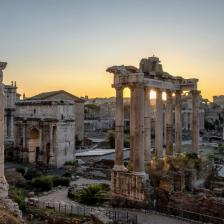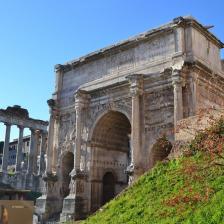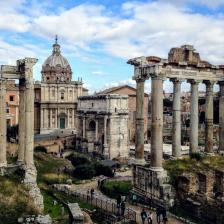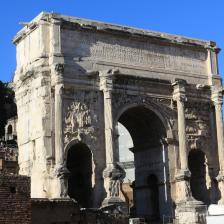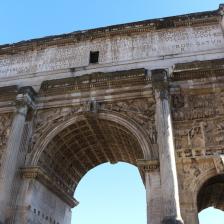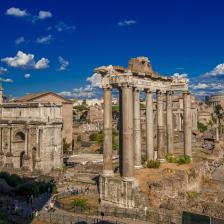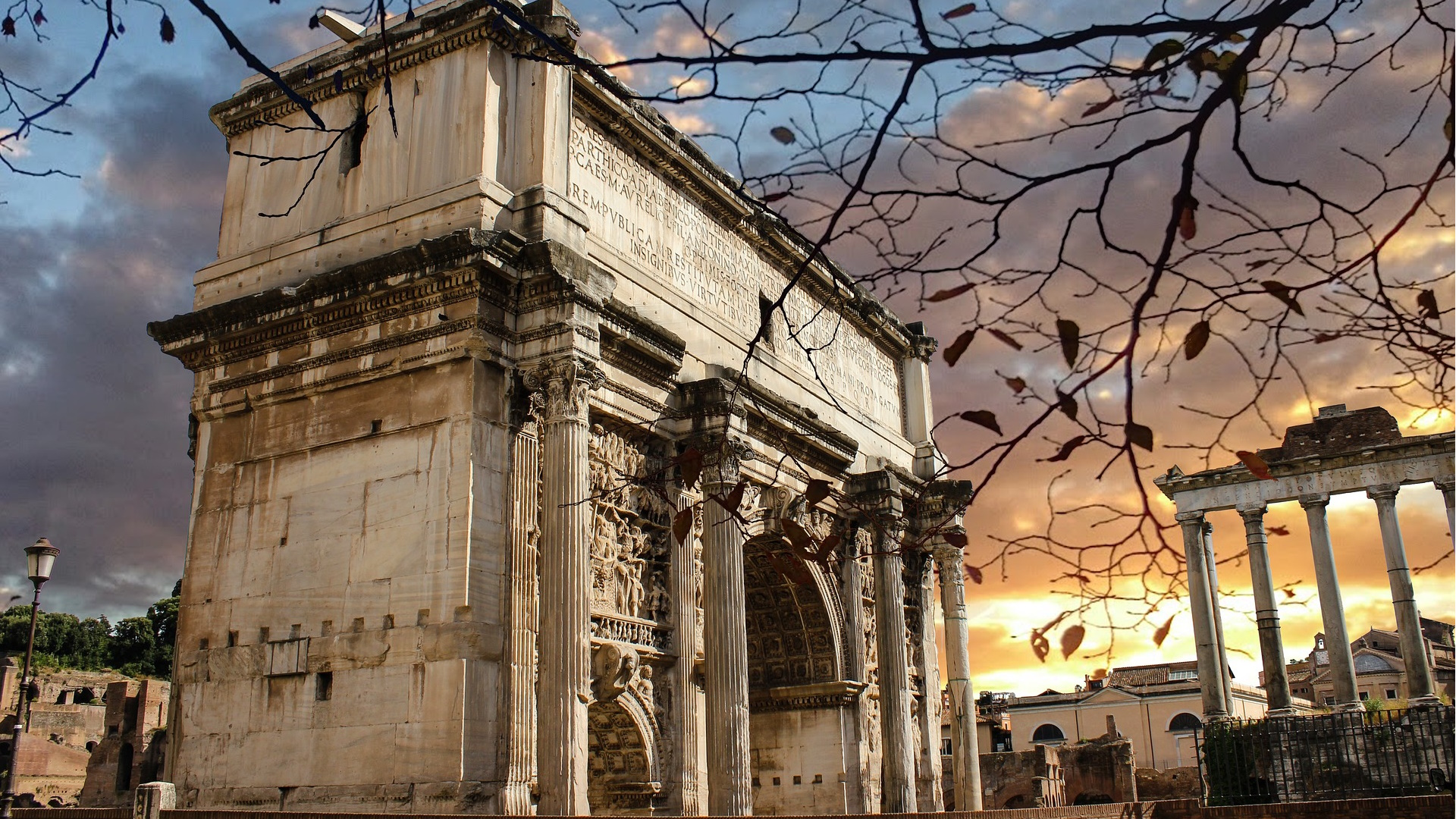
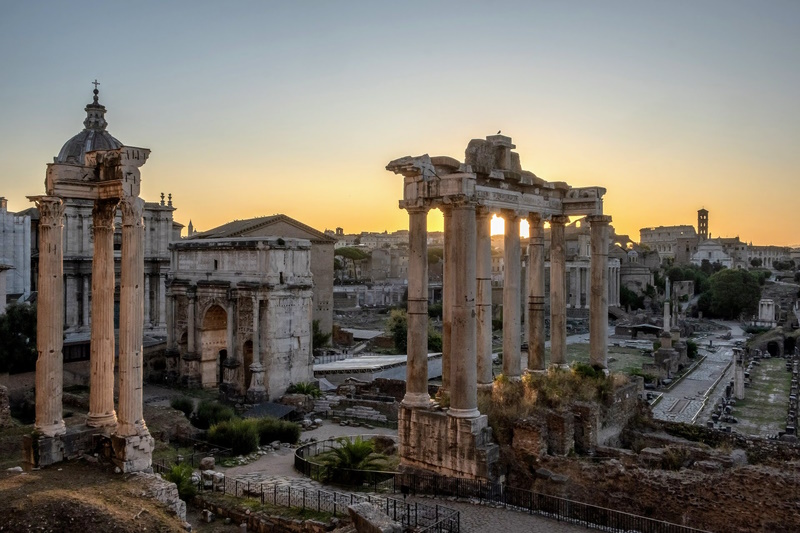
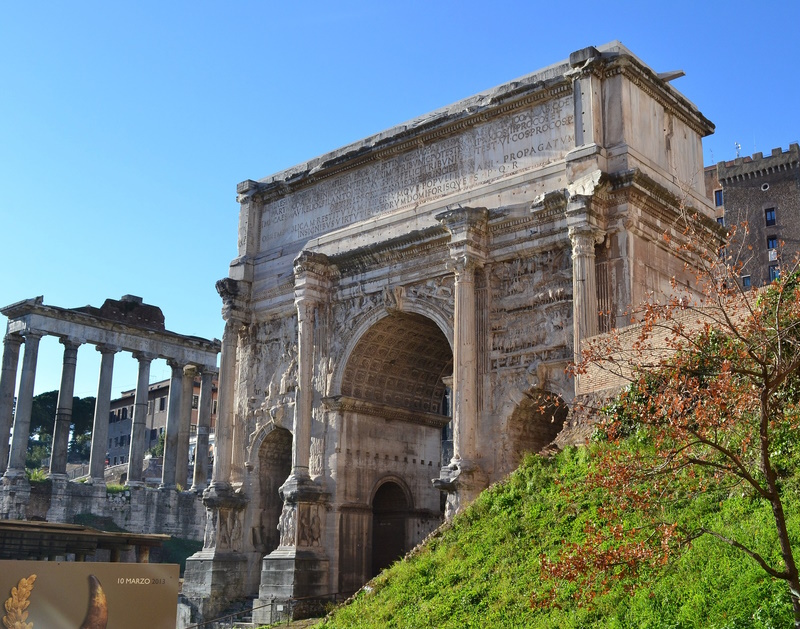
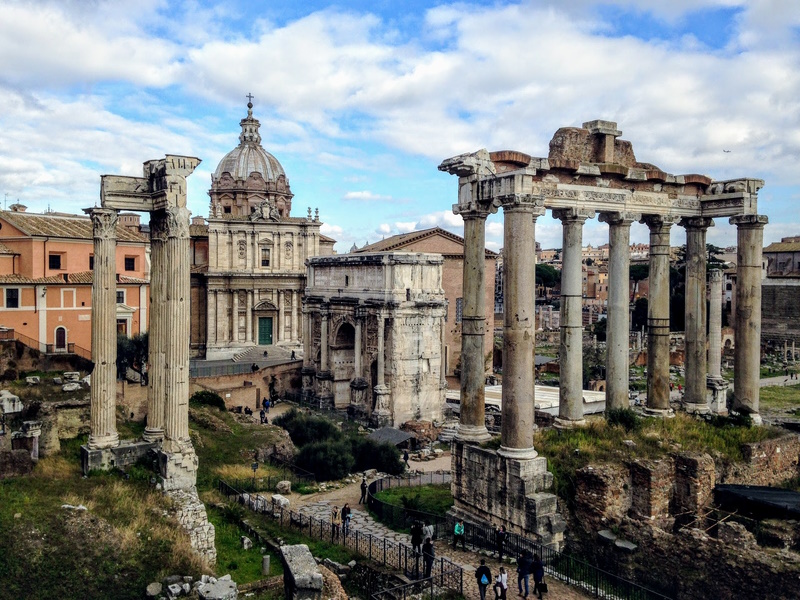
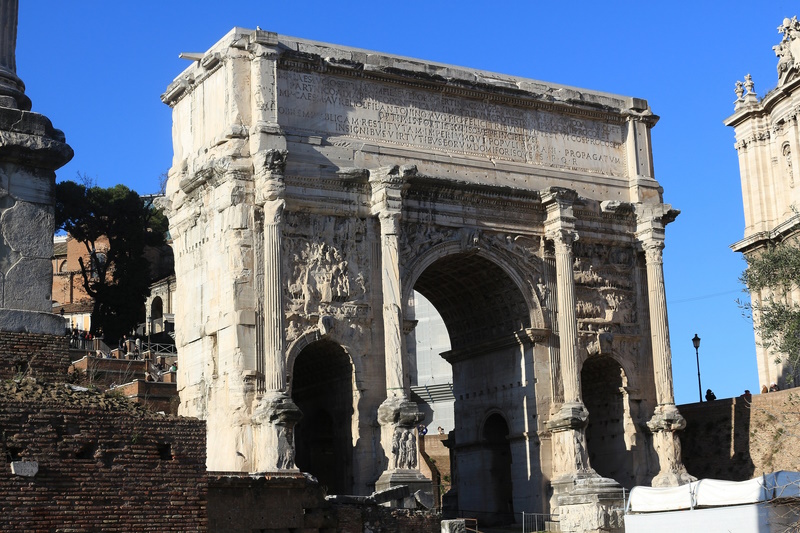
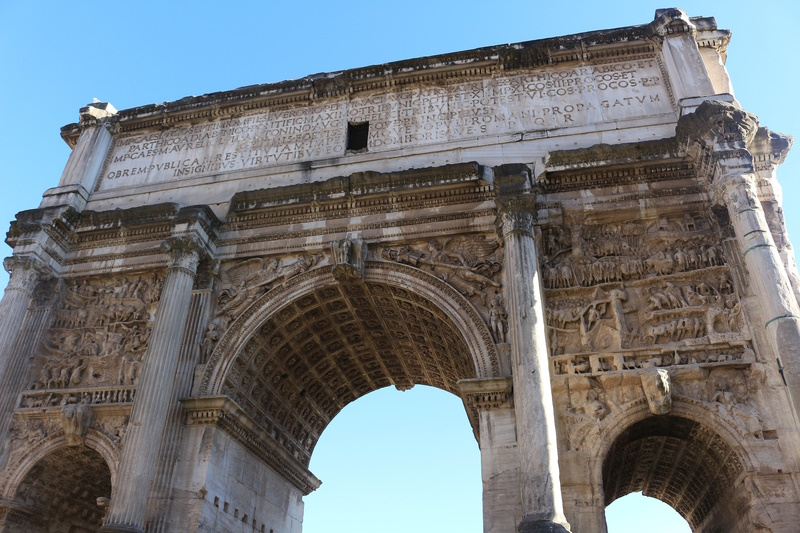
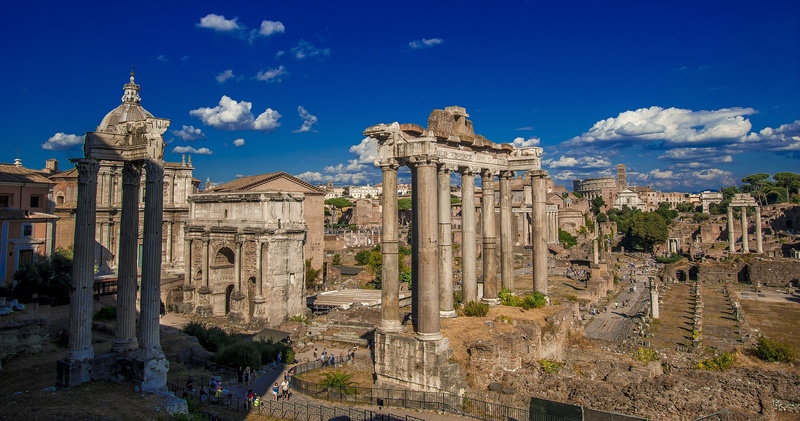
To the emperor Caesar Lucius Septimius Severus Pius Pertinax Augustus Parthicus Arabicus Parthicus Adiabenicus, son of Marcus, father of his country, Pontifex Maximus, in the eleventh year of his tribunician power, in the eleventh year of his rule, consul thrice, and proconsul, and to the emperor Caesar Marcus Aurelius Antoninus Augustus Pius Felix, son of Lucius, in the sixth year of his tribunician power, consul, and proconsul (fathers of their country, the best and bravest emperors), on account of the restored republic and the rule of the Roman people spread by their outstanding virtues at home and abroad, the Senate and the People of Rome (sc. dedicate this monument).
So reads the dedication inscription to Septimius Severus and his son Caracalla engraved on the attic of the triumphal arch, which celebrates the emperor's victories in the two campaigns against the Parthians. Initially, the dedication included his other son Geta, whose name was later removed after his assassination by his brother.
Built in 203 AD by emperor Septimius Severus, the Arch, with a height of 20.88 meters and a width of 23.27 meters, rises under the slopes of the Capitol Hill inside the Roman Forum. Made of travertine and brick and entirely covered in Pentelic marble, it has three arches, a larger central one and two smaller side arches; four Corinthian columns support the architrave and frame the somptuous decoration.
In the archivolts of the central vault, you can admire two winged victories with a trophy, while in those of the minor arches are river divinities. A small frieze depicting the triumphal procession of the emperor entering Rome, runs along the smaller arches; instead, the four larger panels - 3.92 x 4.72 meters - represent the salient moments of the emperor's military campaigns against the Parthians.
During the Middle Ages, the Arch of Septimius Severus was used as a fortress, and, over the centuries, it was gradually fell under piles of debris. In the 19th century and until the first half of the 20th century, it was finally freed from all encumbrance and subjected to excavations and restorations. The last maintenance interventions date back to 2020-2021.
Today, we can admire one of the best preserved and evocative Roman monuments of the ancient Roman Forum.
The Roman Forum and the Palatine
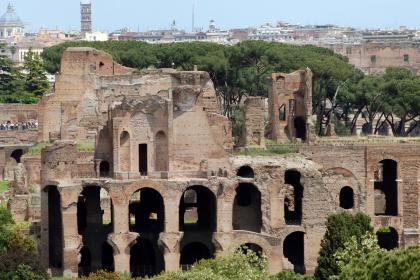
 Condividi
Condividi
The Flavian Amphitheatre (The Colosseum)
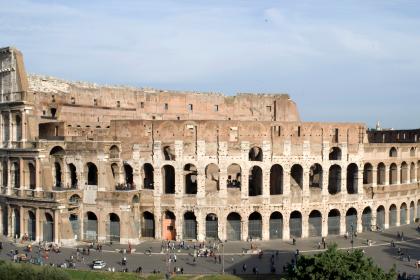
 Condividi
Condividi
Archaeological area of the Imperial Fora
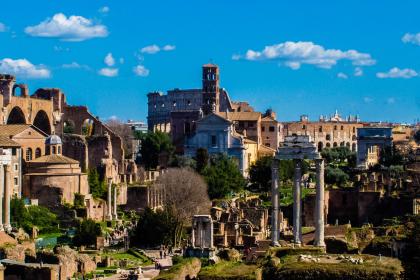
 Condividi
Condividi
Information
 Condividi
Condividi
Location
To find out about all accessibility services, visit the Rome accessible section.












































